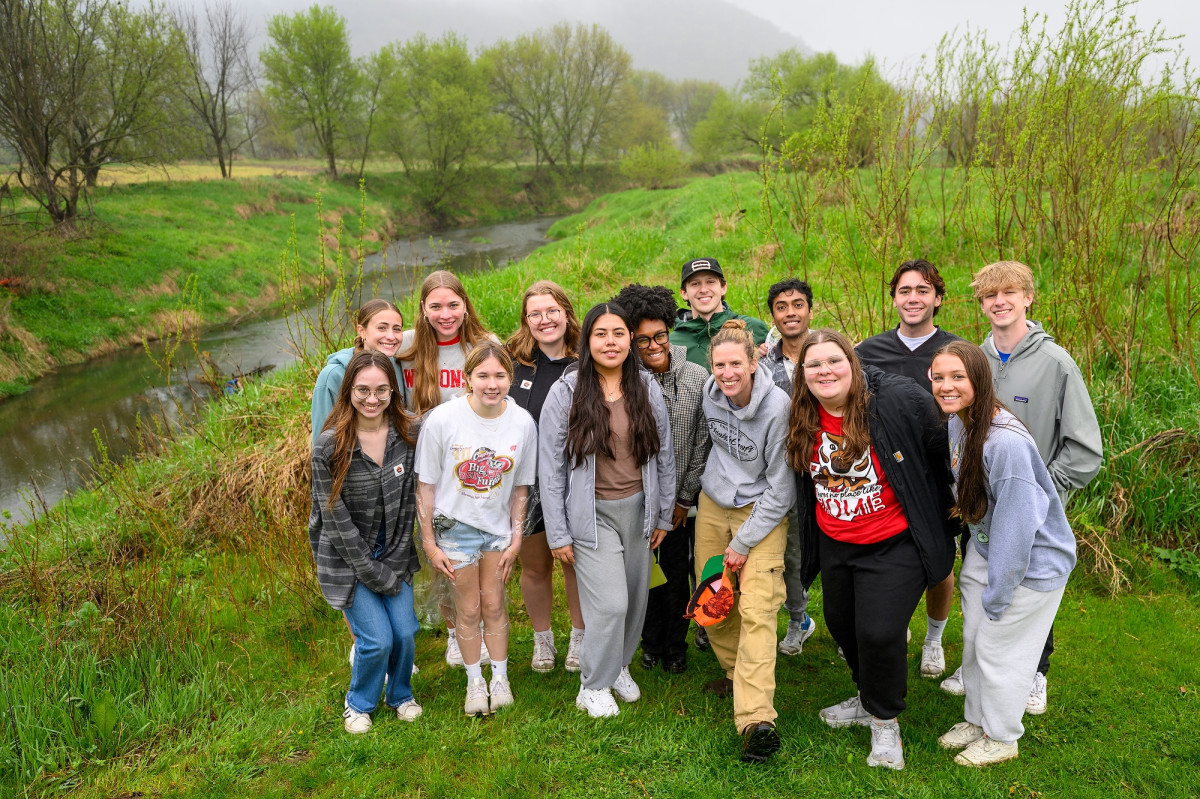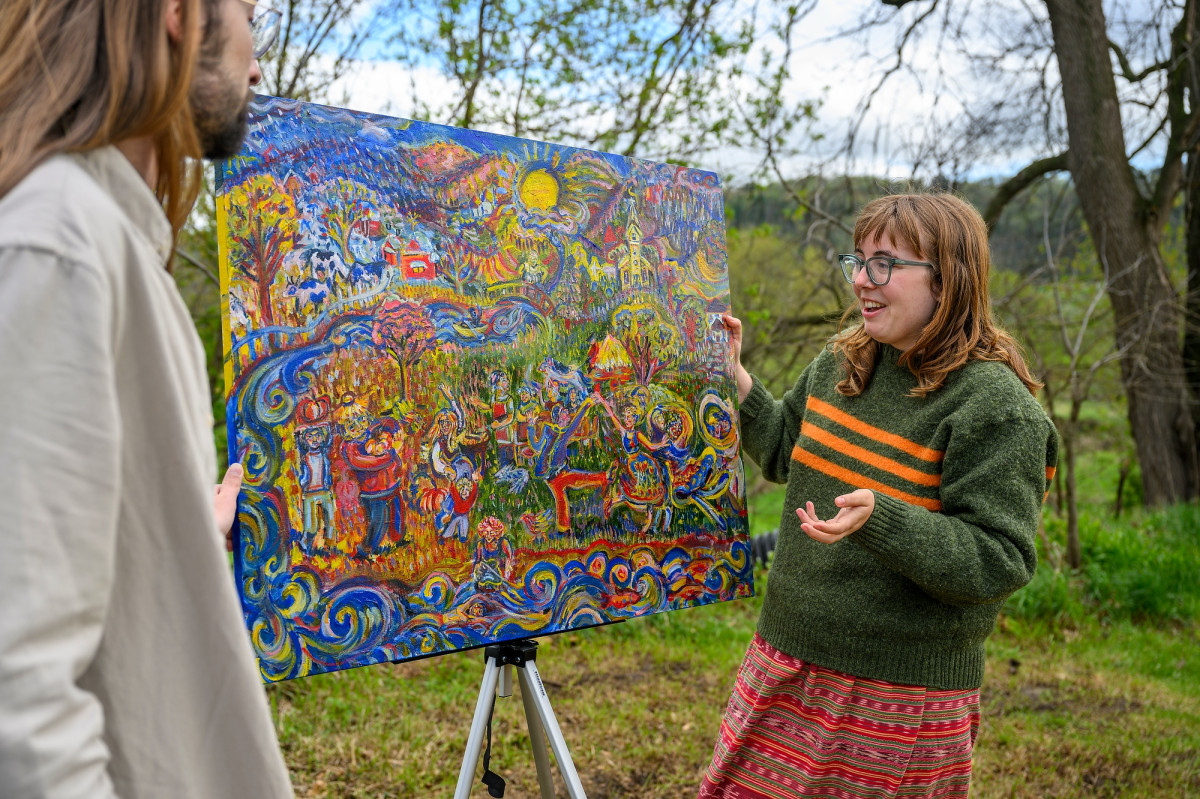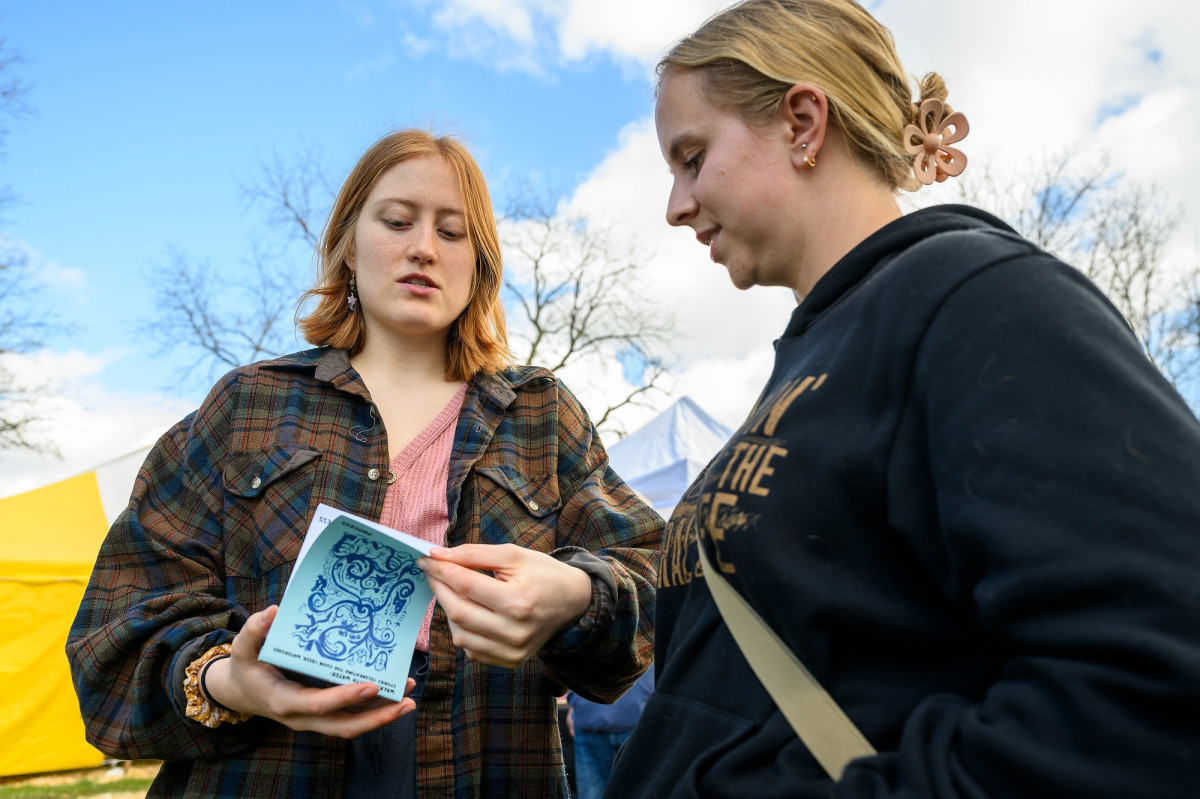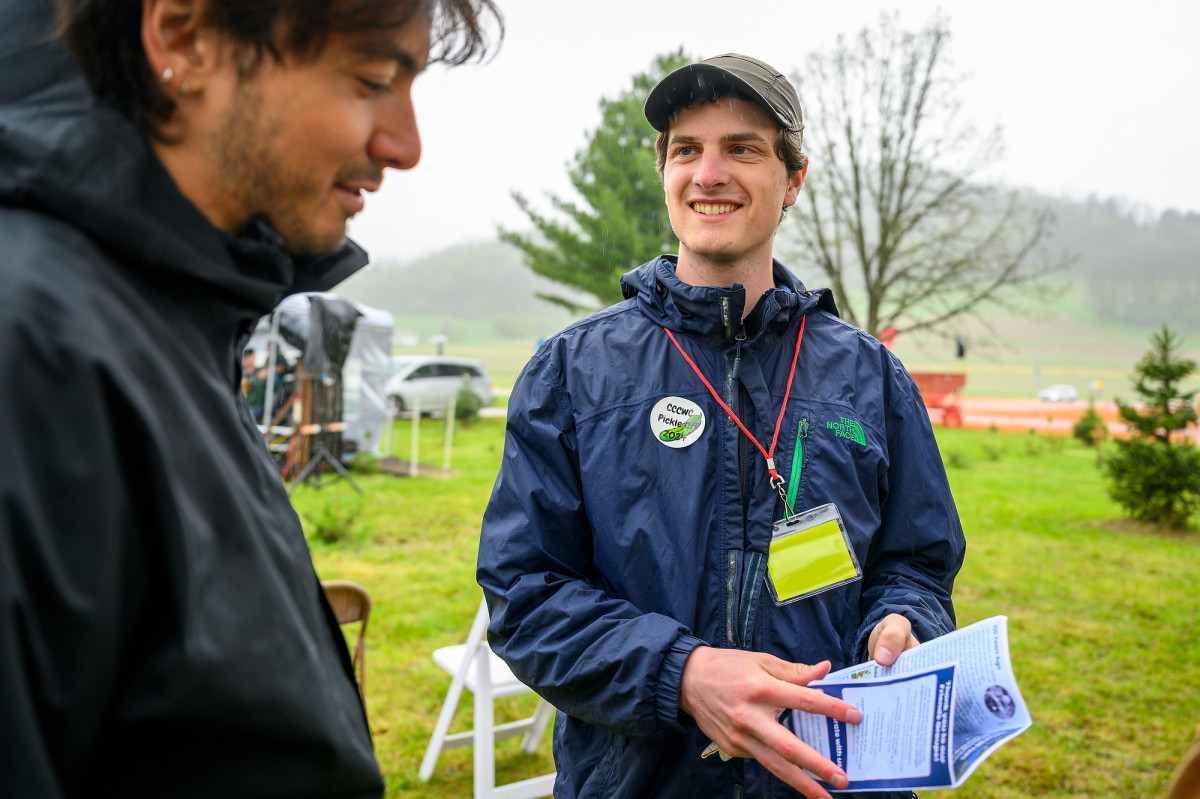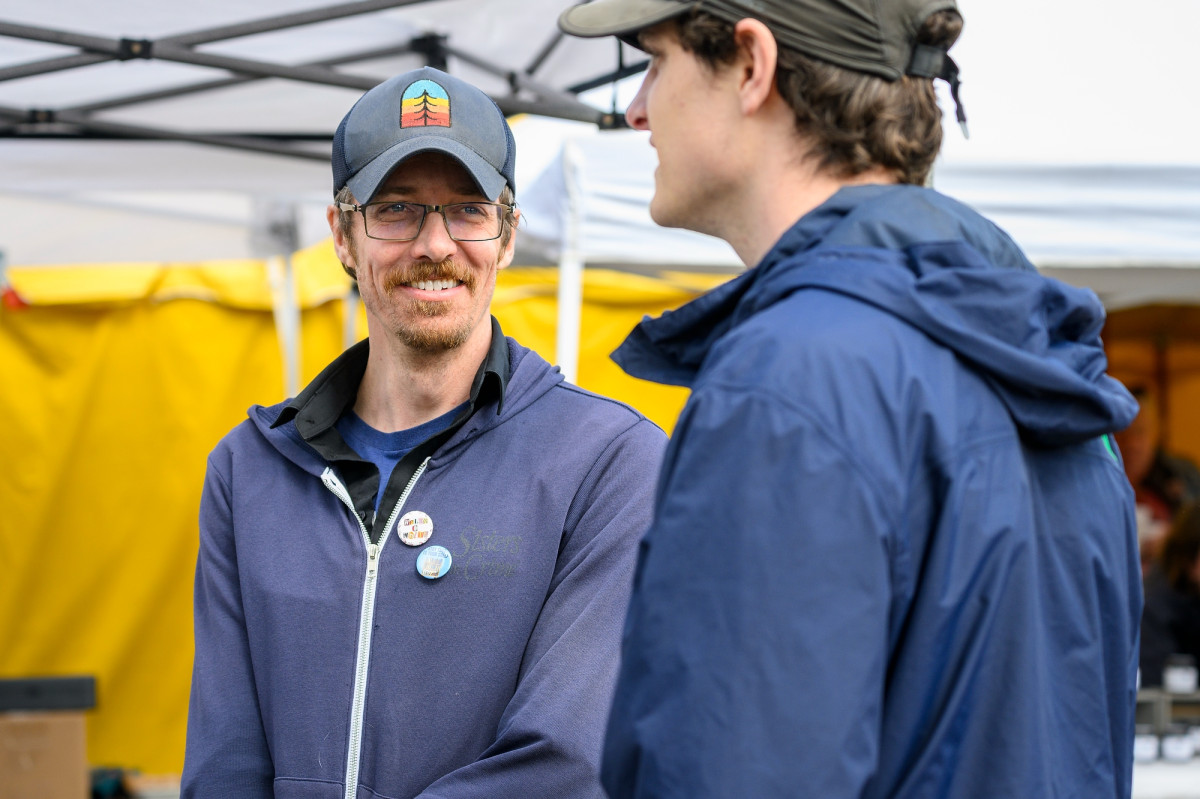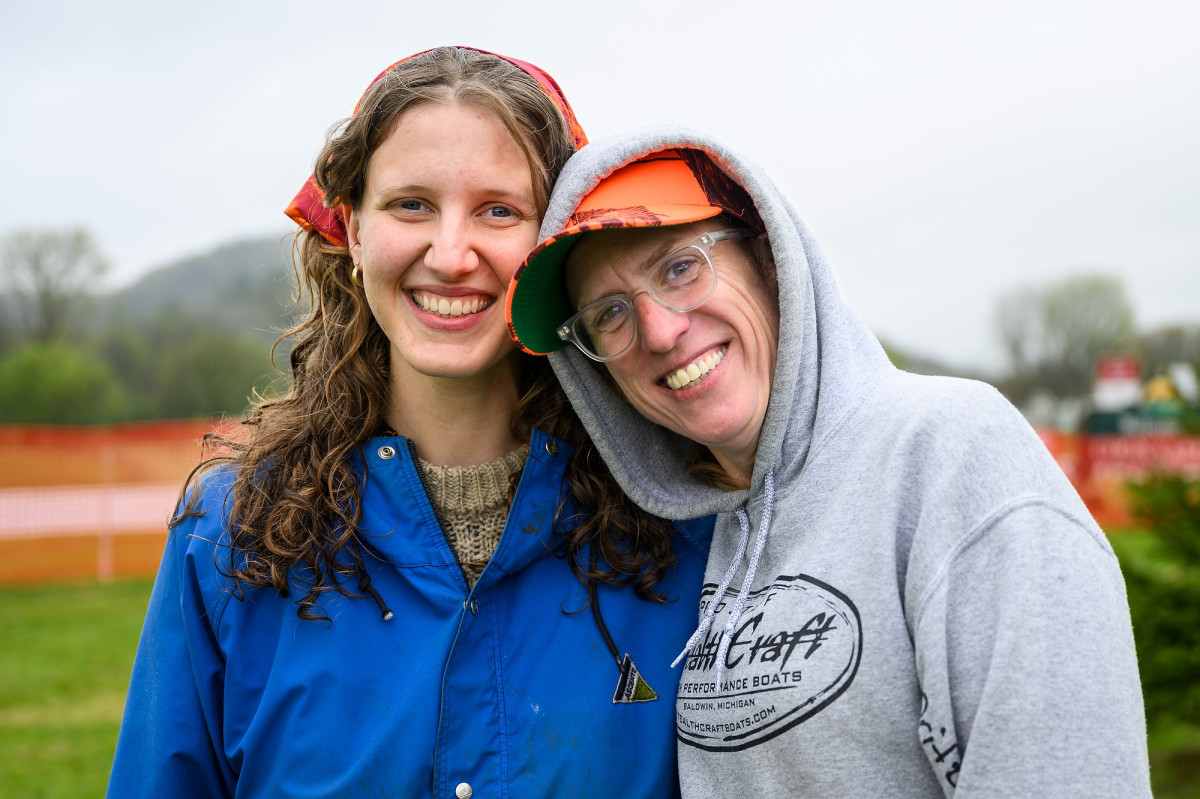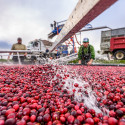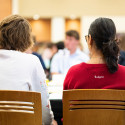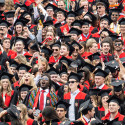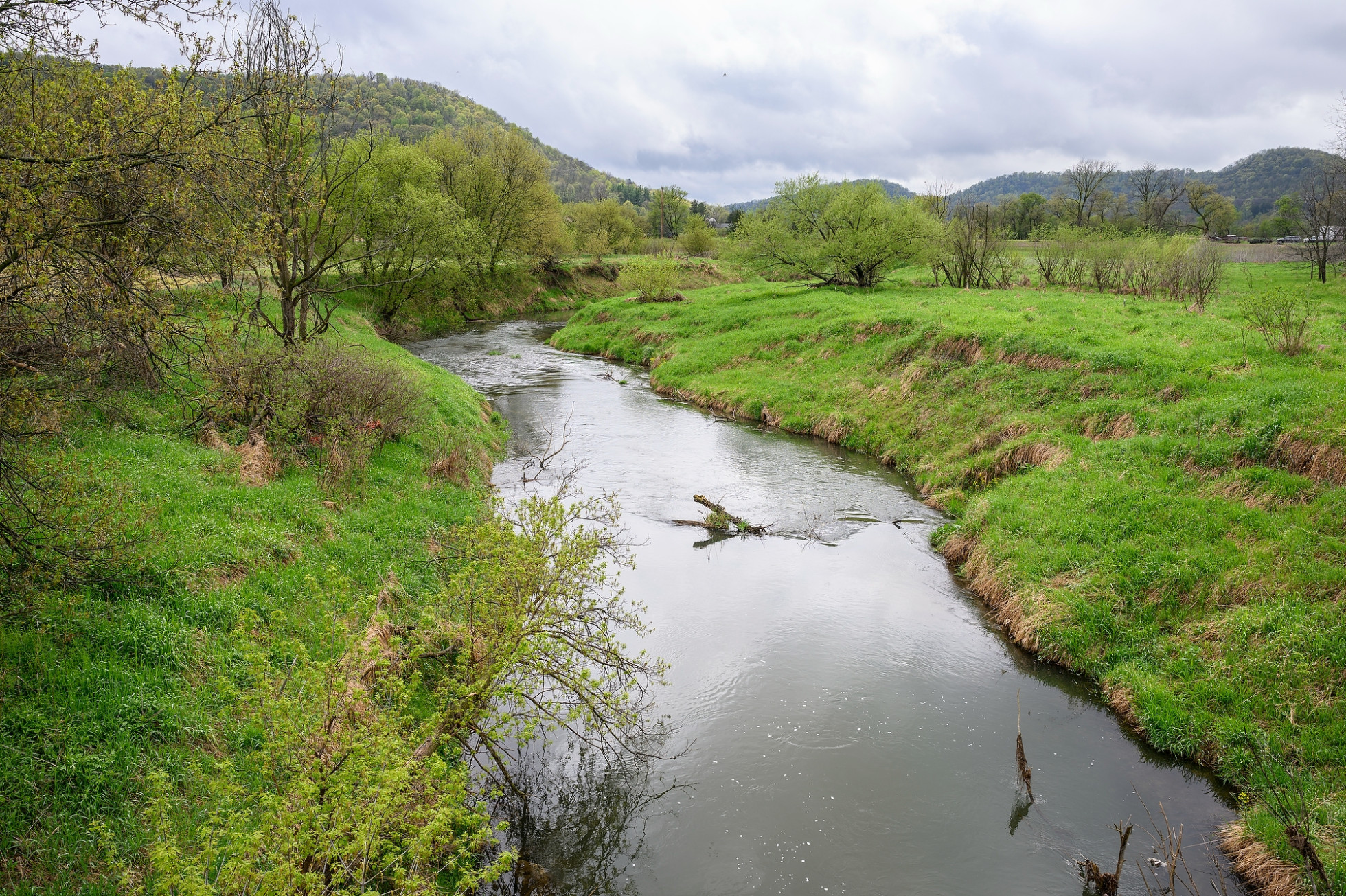
After the flood
UW students apply classroom learning to support a Wisconsin community in healing.
In a field on the edge of downtown Coon Valley, Wisconsin, surrounded by rising bluffs and rolling hills, the smell of pancakes and a buzz of celebration brings a rainy spring morning to life. The day is May 4, 2024, and despite the drizzle, the gathered crowd is full of laughter and enthusiasm. Huddled in raincoats and under umbrellas, people of all ages greet one another. They connect with the local 4-H club and conservation groups, enjoy live music and shop at vendor booths just uphill from the town’s namesake, Coon Creek.
The gently winding stream is the reason Coon Creek Watershed residents and students from the University of Wisconsin–Madison have gathered together.
Looking out over the slow-moving water, it’s surprising to think that not long ago the entire field, downtown and farmland beyond were flooded at least ankle high. In 2018, the community experienced a 100-year flood that washed out crops, destroyed businesses and devastated the homes of families that have lived there for decades.
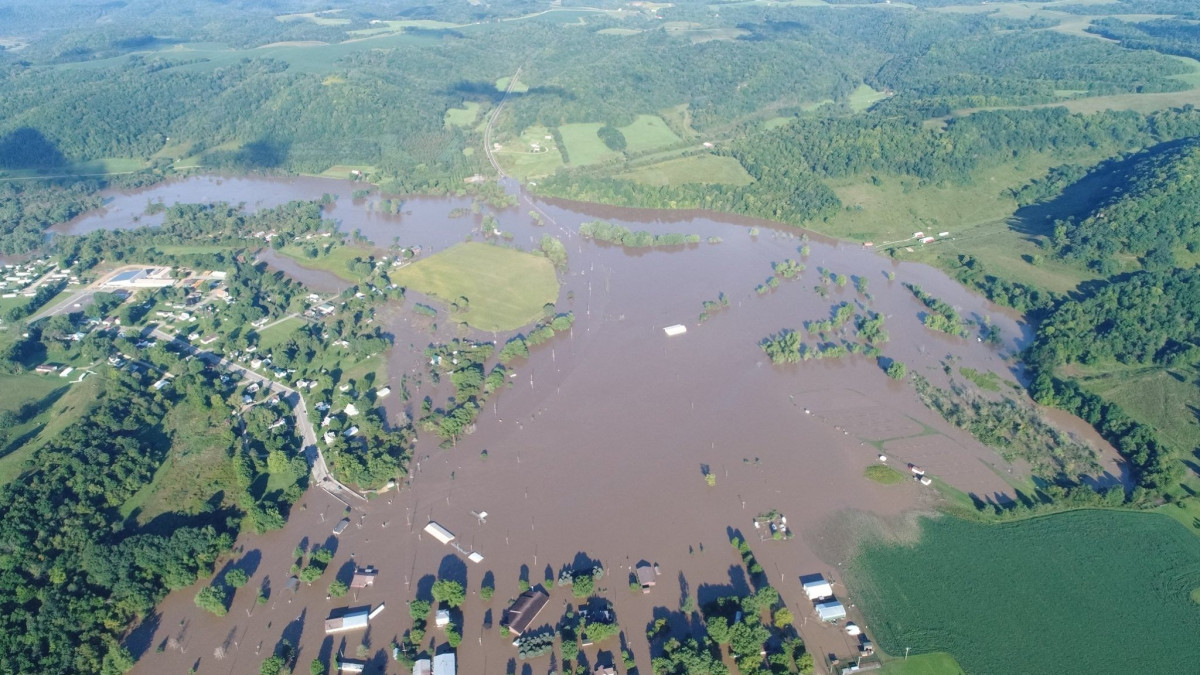
The day’s celebration is part of ongoing efforts in the Coon Creek Watershed to help residents cope with the loss from the flood and to find joy as they rebuild. Events like these, organized by the Coon Creek Community Watershed Council, bring people together to increase awareness, accessibility and adoption of land management practices known to mitigate flooding, while also supporting environmental health and quality of life. That mission is shared by the many UW–Madison students who are on site to bring what they’ve learned on campus to support work out in the world.
Among them is UW–Madison alumna Gabrielle Whisler, busily setting up a canvas on an easel under the protection of one of the tents. People greet her with hugs and exclamations as they take in her painting together. Colorful bright swirls of paint depict a man fishing, someone swimming, a group dancing through hills, others picking pumpkins, all along the banks of the same creek where Whisler and celebration-goers stand.
“I want people to see themselves within the painting. I want people thinking about the celebration of the future and the past,” says Whisler, who graduated from UW–Madison with a degree in biological systems engineering in May 2023.
The UW class that brought Whisler to Coon Valley was taught by Caroline Gottschalk, an English professor committed to leveraging university resources to support Wisconsinites.
While other efforts by UW–Madison students from the Nelson Institute for Environmental Studies focused on helping improve the community’s flood resilience, Gottschalk and her students worked to address a related community concern: how to reckon with the emotional damage done by the flood. Working with the Driftless Writing Center and UW-La Crosse faculty and students, Gottschalk and her students initially helped document the experiences in a digital story map called Stories from the Flood. This work then inspired the Coon Creek Community Watershed Council to launch a project of their own, in collaboration with Gottschalk and more UW–Madison students, called Learning to Make Running Water Walk.
Documenting and visualizing real-life stories can help to bring private struggles into the open, and people in a community can find common ground. From there, they can make decisions about what to prioritize next in their recovery efforts. Seeing stories of the flood alongside familiar names, tall tales, favorite locations or seasonal activities also reinforces the strong connections and joy that still exist throughout the community.
Whisler was one of the students who helped record oral narratives for Learning to Make Running Water Walk. She also keeps coming back to help with the new projects Gottschalk and her students create for Coon Valley. Most recently, they helped publish a booklet, called a zine, of community recipes and stories, titled “Pickles and Polka.” Motifs from Whisler’s painted community portrait can be seen throughout the zine, connecting one page to the next.
Many of the other students from these earlier iterations of the course are still around, helping mentor new undergraduates, checking in on community members they’ve developed friendships with and assisting with conservation and community organizing when they can. Like Whisler, pairing academic interests with real-world work shaped these students’ approach to their future careers.
Gabrielle Whisler
A landscape painting may not be the first thing you’d expect an engineering student to create, but Whisler is also an artist who enjoys exploring human connection through her work. She came to UW–Madison excited to focus her creativity through engineering by building solutions that help humankind.
“I feel like art creates this empathy and this way of seeing humanistic themes within engineering,” she says.
When she heard about a course that brought students from campus to Coon Valley, a Driftless Area community recovering from traumatic flooding, Whisler saw the perfect opportunity to use both her engineering knowledge and her artistic talents while supporting community members off campus.
“It flourished into me creating this painting and learning so much about how this collaboration between the community and engineers is really important,” she says. “Working on the project reinforced the idea that engineering is more than just mechanical intuition, it’s thinking about what a community needs and how to build something that best fits their needs.”
Emma Hamilton
When Gottschalk heard that Emma Hamilton was interested in the world of publishing, she knew Hamilton was the perfect person to help produce a zine. Hamilton, who graduated in 2023 with degrees in English and environmental studies, jumped at the opportunity.
“Working on the project informed my interests in working with people on environmental social issues,” Hamilton says. “Talking to people and hearing their stories and learning how we can make people’s lives better and where they live, a place where they feel happy … I want to keep doing that.”
Like each project the group works on, the goal is to produce something the community needs and can use. While academic research papers are great for advancing research and informing future work, publications like a zine are better suited for the kind of community engagement the students helped facilitate in Coon Valley. Shorter than a magazine but chock-full of stories, quotes, recipes and visuals, Hamilton helped a team of students weave together bits of the community’s stories so that they talked to each other like streams of conversations.
Hamilton then worked as a fellow at Clean Wisconsin, where she incorporated local perspectives into the development of large-scale solar projects for rural parts of the state. She now lives, works and plays in Alaska. There, she continues to help grow healthy relationships between people and the environment through her work as an energy storyteller, wilderness trip guide and an environmental educator. Hamilton looks forward to the next opportunity she gets to visit her friends in Coon Valley.
Ben Sellers
Ben Sellers knows that just as a body of water shapes a landscape, it can also shape the communities who live alongside it. During his time as an undergraduate student, Sellers discovered Gottschalk’s class and dove into collecting and organizing oral histories for Stories from the Flood. A few years later, Sellers was working on a master’s degree in agroecology and environmental science with Eric Booth, a research scientist at UW–Madison Gottschalk had introduced him to. He knew watersheds in the Driftless Area would be the perfect place to study.
“I got interested in the way that streams recover from flooding and the way that humans manage streams for different purposes. One big driver out in the Driftless for a lot of stream management is fisheries and the recreational fishing economy,” he says.
After talking to community members and resource managers, Sellers decided to focus on monitoring stream temperature in the recovering watershed.
He deployed temperature loggers throughout the area, one of which happened to be in the exact same spot as a Wisconsin Department of Natural Resources temperature logger, which collected data 20 years before. Sellers’ post-flood data provided a valuable comparison of water temperature before and after the flooding, proving that the loss of the dams changed the water temperature upstream. The data helped alert watershed managers to the changes so that they could adjust the water levels in the Jersey Valley reservoir so as not to contribute to additional stream warming.
While collecting data, Sellers got to meet and regularly check-in with Driftless community members in the area. Not only did he write and successfully defend his research findings in his master’s thesis in 2024, but Sellers also made sure to share his findings with area residents and managers. Sellers plans to continue conducting research done in collaboration with communities.
Hank Covey
For Hank Covey, a PhD student in composition and rhetoric, it’s all about mapping constellations of care. Covey has been studying the documentation of natural disasters for years, with a particular interest in how different forms of documentation can help a community recover from disaster.
“The thing about disasters, unfortunately, is that it draws people together,” he says. “I don’t really even want to think about it as research anymore. I just want to think about it as being able to facilitate story gathering and then figuring out where to put that information for the people that need it.”
Covey began working with the community as one of the interviewers involved with the Learning to Make Running Water Walk oral narrative digital archive project. He believes that making community memory more accessible and usable in that digital, interactive format is the future of natural disaster documentation. Not only is it documented, but it’s also actionable, helping a community see commonalities, gauge what issues are most pressing and think about ways to improve resiliency in the future.
Sydney Widell
Like many people finding their way in college, Sydney Widell remembers being pulled in several directions at once. Did she want to be a journalist? An ecologist? A freshwater scientist? A science writer? Today, she counts herself lucky to have met Gottschalk.
“There’s so many different ways to engage with water, and science is one way. But we all have different ways of understanding,” Widell says. “[Gottschalk] was the first person who really made me feel like these things that feel really distinct actually should go together.”
Widell first came to Coon Valley to work on Stories from the Flood. She became enamored with the complex, layered perspectives that make up a community’s identity and their relationship to water and landscape. Widell found herself able to explore questions of both science and relationship, all while building meaningful connections to the community members in Coon Valley. After graduating with degrees in geosciences and geography, Widell returned to UW–Madison and completed a master’s of freshwater sciences, continuing to work with Gottschalk and Coon Valley throughout. The connection made such an impression, that after graduating again in 2023, Widell now works for the Coon Creek Community Watershed Council as a full-time employee.
“I’m excited to continue partnering with UW–Madison, and I’m also looking forward to working with this growing network of land holders in the Coon Creek Watershed and be inspired by the work everyone’s doing. I’m so grateful that I can be part of it.” ■
